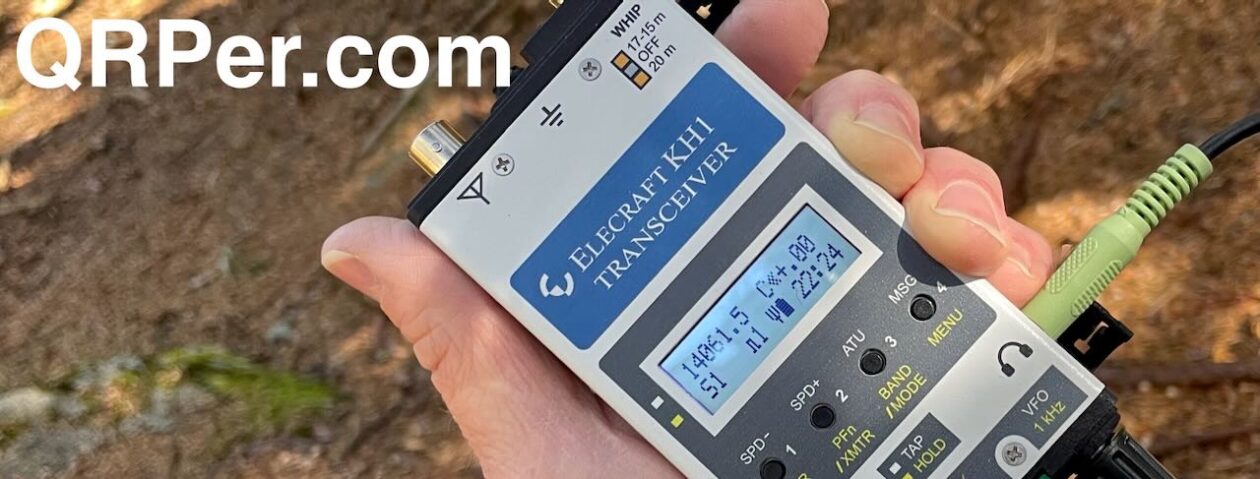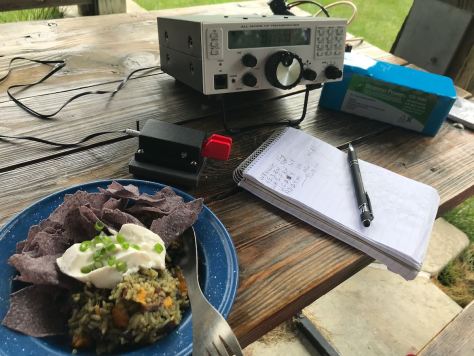UPDATE: My review of the mAT-705 ATU below is accurate as of its original posting. Since this review, however, I’ve discovered some design issues that prevent me from continuing to recommend it. Click here for details.
UPDATE 2: Mat-Tuner released the latest updated and upgraded version of the mAT-705 in December 2020. It’s called the mAT-705Plus. Click here to read my initial review of the mAT-705Plus. Note that the following article pertains to the original mAT-705 which is no no longer being produced, but still available for sale (at time of posting) both new and used.
Last week, Vibroplex sent me their new Mat-Tuner mAT-705 external ATU on loan to evaluate with my recently acquired Icom IC-705.
Here’s some info about the mAT-705 from Vibroplex’s product page:
The new mAT-705 antenna tuner is designed specifically for use with the new Icom IC-705 QRP transceiver. Connect the mAT-705 directly to the TUNER jack on the IC-705 with the included cable and control the antenna tuner directly from the front panel of the radio or use RF-sensing to actuate the tuner when changing bands. 1.8-54 MHz, 5-1500 ohms matching range, 16000 user memories recalling previous used settings internal to the tuner when returning to an earlier used frequency.
The tuner is powered by an internal standard 9 volt alkaline battery. Power saving technology inside the tuner allows the use of the unit for months without replacement. No battery power is consumed by the unit when powered off.
Yesterday, I stopped by South Mountains State Game Land (K-6952) to give the mAT-705 some field time. Up to this point, I had not used the tuner other than tuning to the 80 and 40 meter bands from home (mainly to make sure it worked before hitting the field).
To really give the mAT-705 a workout, I deployed my CHA Emcomm III Portable random wire antenna. The Emcomm III is the only field antenna in my arsenal that covers 160 meters – 6 meters–an exceptionally wide frequency range.
 What I like about this particular POTA site is the open parking area which allows me to configure the Emcomm III a number of ways.
What I like about this particular POTA site is the open parking area which allows me to configure the Emcomm III a number of ways.
The Emcomm III, being a wire antenna, is incredibly stealthy. Since you can’t see it in the photo above, I’ve marked up the configuration below (click to enlarge):
 I’m guessing the apex of the antenna was easily 45′ high.
I’m guessing the apex of the antenna was easily 45′ high.
Activating
I started my activation on the 80 meter band.
 After working a few stations on 80 meters, I decided to test the mAT-Tuner over a fairly wide frequency range before calling CQ on the 40 meter band.
After working a few stations on 80 meters, I decided to test the mAT-Tuner over a fairly wide frequency range before calling CQ on the 40 meter band.
Here’s a short video:
POTA Hunters: look for me on the 160 meter band this fall and winter! I’m so impressed how well it matched the Emcomm III on 160.
Indeed, I am very pleased with how quickly and efficiently the mAT-705 found matches on every band I tested.
In terms of form factor, the mAT-705 is quite compact, but a little longer in length than I had anticipated. Honestly, though, there’s nothing here to complain about.
The enclosure/chassis is incredibly strong. I’m willing to bet you could accidentally drive over it with your car and it would survive in tact.
The mAT is powered by an alkaline 9V battery. Vibroplex expects that this battery will last for months under normal use.
Note that there is a specific procedure for replacing the battery in order to protect the LED “illuminators” that are press-fit to the board.:
- Remove the case by removing the 4 rear 2mm allen screws.
- Turn the tuner upside down and shake it a little to get the PCB to slide out of the case enough to grab.
- Carefully grasp the PCB sides and slide the board out slowly.
Update: I’ve followed the procedure above and still had an issue with the illuminators falling out. They really need to be secured better. I was able to re-insert them and close the ATU, but when you open the mAT-705 to change the battery, be in a space where you can capture both of them if they fall out.
Any mAT-705 negatives?
Not really, but I do feel the price is a little steep at $219.95–but then again the mAT-705 seems to do the job and do it well. I have to assume the TBA Icom AH-705 ATU will cost at least as much. I’m okay with paying at the top end of the market if I’m getting a quality product and this certainly seems like one.
I like the fact that the mAT-705 integrates perfectly with the IC-705 via the control cable and that I don’t have to worry about protecting it at all in my backpack. It’ll also take the IC-705 through the entire HF spectrum and even up to 6 meters.
I plan to continue using the mAT-705 for a while and even test it on severely non-resonant antennas just to see how far I can push it for a match.
Stay tuned! (See what I did there–?)
Many thanks to Vibroplex, again, for lending me this mAT-705 for review and evaluation.













